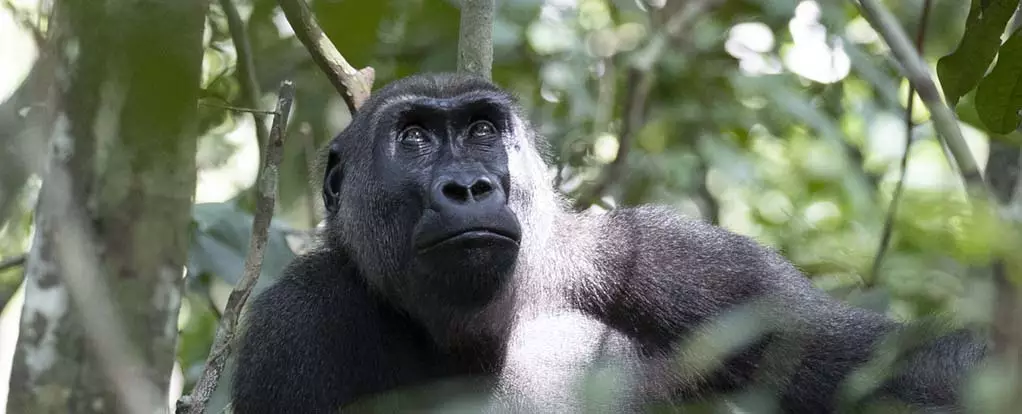Moukalaba-Doudou National Park in Gabon is not just a sanctuary for wildlife but also a treasure trove of botanical wisdom intertwined with the survival practices of its human and gorilla inhabitants. For centuries, both species have relied on the rich diversity of plants in this lush rainforest, utilizing nature’s bounty for nourishment and healing. Recent research underscores a fascinating connection between traditional knowledge and modern scientific investigation. The study sheds light on the medicinal potential of various plants known to be used by local healers and equally consumed by western lowland gorillas (Gorilla gorilla gorilla).
At the heart of this inquiry is a collaborative project led by bacteriologists Leresche Even Doneilly Oyaba Yinda and Richard Onanga, who aim to bridge the gap between indigenous herbal practices and scientific validation. Previous reports have hinted at the possibility that the diets of great apes may offer clues to the medicinal properties of certain plants. This notion piqued the researchers’ interest, prompting a deeper analysis of the flora utilized by both gorillas and local tribes.
The study utilized a comprehensive approach, examining the bark of four tree species, including the kapok tree (Ceiba pentandra) and the African teak (Milicia excelsa), for their antimicrobial and antioxidant properties. The results were promising, revealing that all four plants exhibited significant antibacterial activity, particularly against multidrug-resistant strains of Escherichia coli. The most compelling evidence emerged from the bark crude extracts of the fromager tree, which demonstrated unparalleled efficacy against these resilient bacterial strains.
Notably, the presence of key medicinal compounds—phenols, alkaloids, flavonoids, and proanthocyanidins—was documented, suggesting possible therapeutic uses in treating ailments such as diarrhea and oxidative stress-related diseases. These findings not only validate historical practices of local healers but also open doors for developing alternative medicinal therapies that could augment contemporary medical approaches.
The research aligns with the burgeoning field of zoopharmacognosy, which explores how animals utilize natural substances to remedy their health issues. As the researchers pondered the dietary habits of gorillas, they recognized that these behaviors could inspire new drug discovery initiatives. While the gorillas might not intentionally seek out these plants for medicinal purposes, their consumption of plant material could fortify their immune systems and mitigate the effects of various pathogens. This capacity to manage microbial infections speaks to the broader ecological role that wildlife plays in sustaining the health of their habitats.
However, the researchers also exercised caution in recommending these plants as effective treatments for humans without clinical validation. The potential complications or side effects of consuming such plant materials remain uncharted territory, necessitating a careful, research-driven approach before broad applications can be considered. Individuals intrigued by the findings should recognize the importance of comprehensive studies that evaluate the true efficacy and safety of these natural remedies.
These revelations have profound implications for biodiversity conservation. The protection of ecosystems like Moukalaba-Doudou National Park is crucial not only for the welfare of the gorillas but also for the preservation of traditional knowledge and the potential of these plants as medicinal resources. The interconnectedness of flora and fauna within these habitats is a reminder of the delicate balance that sustains our environment.
As scientists and practitioners future-proof public health with alternative medicines, the ethical responsibility to protect natural habitats becomes more pressing. By preserving the diverse array of plants and their chemical constituents, we safeguard a heritage of healing wisdom and the future of potential pharmaceutical discoveries that could benefit both human and animal health.
The intersection of traditional knowledge and scientific inquiry at Moukalaba-Doudou National Park exemplifies the rich, uncharted potential of natural ecosystems. Ongoing research into the medicinal properties of these plants could transform our understanding of health and wellness, yielding innovative treatments rooted in the age-old wisdom of our closest primate relatives. Protecting these habitats is not just about conservation; it’s about preserving the opportunity to delve deeper into nature’s pharmacy.


Leave a Reply